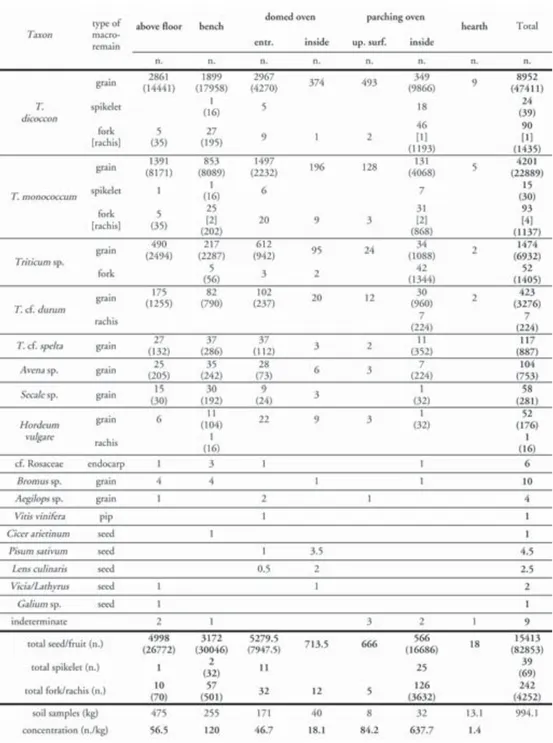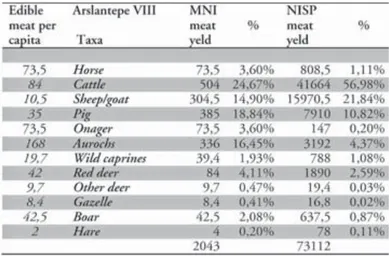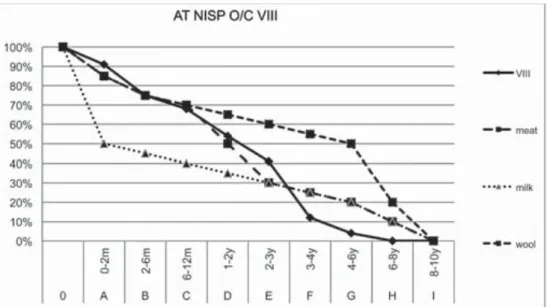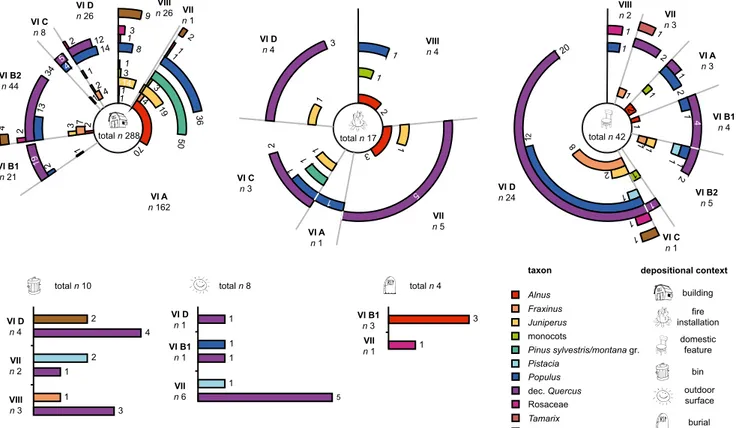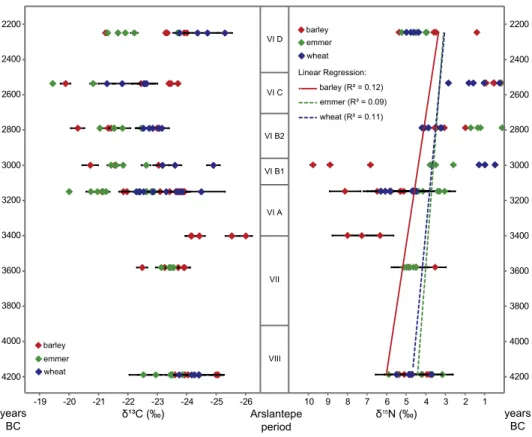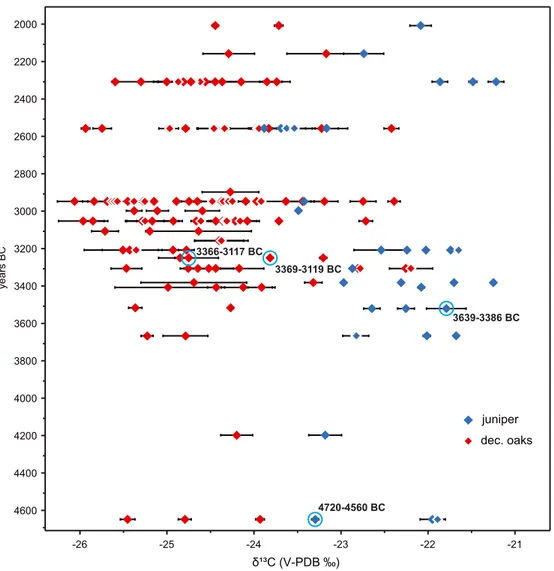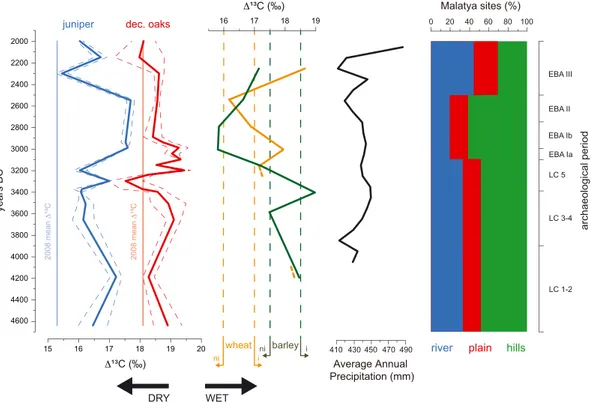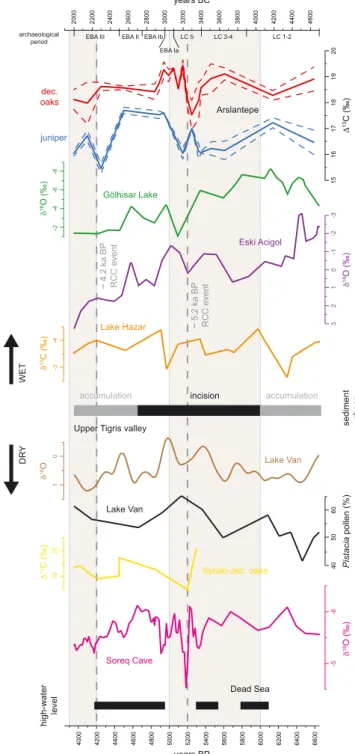Dottorato di ricerca:
Scienze della Terra
Curriculum: Scienze Applicate per la Protezione dell'ambiente e dei Beni
Culturali
XXX ciclo
LO STUDIO DEGLI ISOTOPI DEL CARBONIO E
DELL’AZOTO PER RICOSTRUIRE CRONOLOGIA,
CLIMA E AGRICOLTURA NELL’OLOCENE MEDIO AD
ARSLANTEPE (ANATOLIA)
---
CARBON AND NITROGEN ISOTOPE ANALYSIS
REVEALS CHRONOLOGY, PALAEOCLIMATE AND
AGRICULTURAL PRACTICES AT ARSLANTEPE
(TURKEY) DURING THE MID-HOLOCENE
Cristiano VIGNOLA
cristiano.vignola@uniroma1.it
Docente Guida:
prof. Laura SADORI (Sapienza Università di Roma)
Tutor esterni:
A te,
che mi hai insegnato l’onestà intellettuale
oltre che morale.
INTRODUCTION 2
SECTION 1
Archaeobotany: plant data in archaeological studies 10
Chapter 1
Investigating domestic economy at the beginning of the Late Chalcolithic
in Eastern Anatolia: the case of Arslantepe period VIII 11
Chapter 2
Timber exploitation during the 5
th- 3
rdmillennia BCE at Arslantepe
(Malatya, Turkey): environmental constraints and cultural choices 42
SECTION 2
Stable isotopes: plant data in palaeoclimatic and agronomic studies 64
Chapter 3
δ
13C and δ
15N from
14C-AMS dated cereal grains reveal agricultural
practices during 4300-2000 BC at Arslantepe (Turkey) 65
Chapter 4
δ
13C values in archaeological
14C-AMS dated charcoals: assessing
mid-Holocene climate fluctuations and human response from a
high-resolution isotope record (Arslantepe, Turkey) 77
CONCLUSIONS
92
The main goal of the archaeobotanical research is to investigate the past relationship between
human communities and natural environment. The study of plant remains from archaeological sites
is traditionally focussed on the reconstruction of past vegetation and the way in which plant
resources were used and managed by human groups. Food consumption, agricultural practice
(processing, storage, food preparation), textile production, pharmacology, timber exploitation, land
use and fodder supply are some of the main topics in which archaeobotanical analysis can provide
useful information (Thiébault ed. 2002; Asouti, Austin 2005; van der Veen 2008; Mercuri et al.
2010; Sadori et al. 2015; González Carretero et al. 2017).
Particularly seeds and fruits analysis looks at the various aspects of plant use related to both
cultivated and wild species. Firstly, crop production and plant landscape are inferred from
taxonomic identification of plant remains (Pepe et al. 2013; Sabato et al. 2015). Secondly, inference
of yield management system and primary economy successfully results in joining archaeobotanical
data with the study of archaeological contexts in which plant remains are recovered (Chevalier et al.
eds. 2014). On the other hand charcoal analysis, as wood is mainly preserved by carbonisation,
leads to the reconstruction of evolutionary trends in vegetation cover and human exploitation
(Rubiales et al. 2011; Arranz-Otaegui et al. 2017). Hence, charcoal assemblages display the
long-term transformations of local environment into a cultural landscape, implying that local
communities used what was present nearby (Shackleton, Prins 1992; Figueiral, Mosbrugger 2000).
It is noteworthy that the integrated approach centred on archaeological sites is now one of the most
developed in archaeobotany across Europe and beyond (Piccione et al. 2015).
In recent years archaeobotanical research has additionally reached a significant position in the
production of palaeoclimatic, palaeoenvironmental and agronomic knowledge thanks to
interdisciplinary applications. Plant remains have been disclosed as powerful tool to explore the role
of climate in the evolution of environment and ancient societies. Climate oscillations during the
Holocene have been often pointed out as the major factor in the emergence and collapse of ancient
civilization (Staubwasser, Weiss 2006). This might be true in particular for semi-arid environments
of eastern Mediterranean where seasonal fluctuations have a strong influence not only on plant
growth, but also on their persistence (Roberts et al. 2011). In these regions modern studies have
shown that plant growth is more closely related to rainfall than to temperature variation (Riehl
2008). Thus changes in rainfall amount or a lowering of groundwater level can cause major
landscape alteration. For this reason archaeological sites in the Near East are turned out to be very
sensitive to mid-Holocene climate trends (Rosen 2007).
These sites and their plant assemblages lend themselves to an evaluation of human capacity for
adapting to palaeoclimate and shaping the landscape. Anyway palaeoecological reconstruction
based on merely quantification of plant remains could lead to misleading conclusions (Masi et al.
2013a). In fact, as stated above, charcoal remains may reflect human selection, rather than humidity
close their stomata reducing intercellular CO
2concentration and fixing not only the lighter
C
(usually preferred) but also the heavier
13C (Farquhar et al. 1989). Although physiological factors
involved in carbon fixation are in turn affected by several environmental variables,
13C/
12C ratio
(δ
13C) can be mainly related to climate fluctuations that influence plant water status (Cernusak et al.
2013). In fact, water availability is the main abiotic factor limiting plant growth, especially in
semi-arid environments (Hartman, Danin 2010). As Tieszen (1991) already reported for archaeological
remains, differences in temperature, solar radiation and soil salinity slightly affect the carbon
isotope composition. In addition changes in δ
13C of atmospheric CO
2
